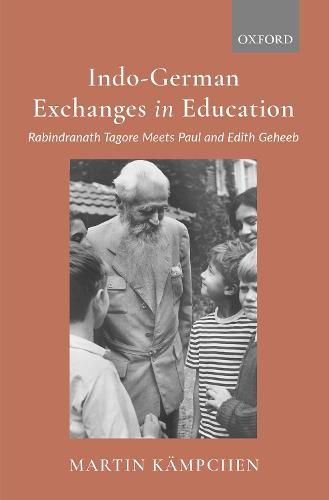Readings Newsletter
Become a Readings Member to make your shopping experience even easier.
Sign in or sign up for free!
You’re not far away from qualifying for FREE standard shipping within Australia
You’ve qualified for FREE standard shipping within Australia
The cart is loading…






In 1930, when Rabindranath Tagore met Paul and Edith Geheeb in Germany, they formed a fruitful and long-term association resulting in the exchange of ideas and vision. Tagore’s Brahmacharya Ashram, founded in 1901 in Shantiniketan, and the Geheeb’s Odenwaldschule, established in Germany in 1910 (thereafter the Ecole d’‘Humanite in Switzerland, established in 1934 after the couple fled Nazi Germany), emerged from vastly different cultural backgrounds and social exigencies. Yet, they recognized striking similarities between their educational endeavours. The meeting also initiated a close association between India and Germany, with the Geheebs attracting many Indian intellectuals and Indophile Germans to their schools. This book explores the areas where the lives of the Geheebs and Tagore, and their respective circles, overlap. Rather than being a biography, a history, or a comprehensive description, this study is a comparison of Tagore and the Geheebs and their schools. Making use of the repository of unpublished correspondence available at the Ecole’s archive, the author studies the Indo- German cultural exchanges in the early twentieth century that were initiated by these three educators and their pedagogical vision.
$9.00 standard shipping within Australia
FREE standard shipping within Australia for orders over $100.00
Express & International shipping calculated at checkout
In 1930, when Rabindranath Tagore met Paul and Edith Geheeb in Germany, they formed a fruitful and long-term association resulting in the exchange of ideas and vision. Tagore’s Brahmacharya Ashram, founded in 1901 in Shantiniketan, and the Geheeb’s Odenwaldschule, established in Germany in 1910 (thereafter the Ecole d’‘Humanite in Switzerland, established in 1934 after the couple fled Nazi Germany), emerged from vastly different cultural backgrounds and social exigencies. Yet, they recognized striking similarities between their educational endeavours. The meeting also initiated a close association between India and Germany, with the Geheebs attracting many Indian intellectuals and Indophile Germans to their schools. This book explores the areas where the lives of the Geheebs and Tagore, and their respective circles, overlap. Rather than being a biography, a history, or a comprehensive description, this study is a comparison of Tagore and the Geheebs and their schools. Making use of the repository of unpublished correspondence available at the Ecole’s archive, the author studies the Indo- German cultural exchanges in the early twentieth century that were initiated by these three educators and their pedagogical vision.